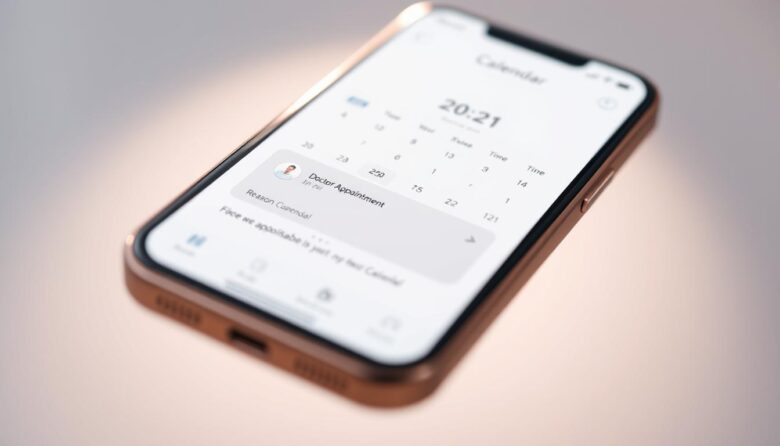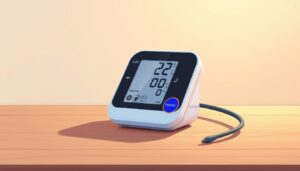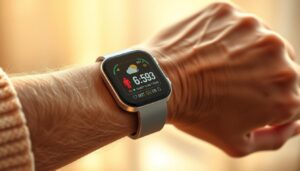Life gets busy, and remembering every medical visit can feel overwhelming. For older adults or those navigating memory challenges, staying organized becomes even more critical. Your smartphone holds a powerful solution right in your pocket: its built-in calendar.
Modern devices make it easy to set reminders for check-ups, prescriptions, or specialist visits. With a few taps, you can create alerts that notify you days or hours before an event. This approach helps reduce stress and ensures you never miss vital care.
Many apps allow sharing schedules with family members or caregivers. This feature keeps everyone informed without constant calls or texts. Whether you’re managing weekly therapies or annual screenings, your phone becomes a reliable partner in maintaining health routines.
Technology adapts to your needs. Recurring events auto-populate, and color-coding helps distinguish between appointment types. You’ll always know what’s next—no more flipping through paper planners or sticky notes.
Why a Phone Calendar is Essential for Tracking Appointments
Consistent routines empower individuals facing cognitive hurdles. For those navigating memory changes, structure isn’t just helpful—it’s transformative. A predictable schedule reduces frustration by creating clear expectations for the day ahead.
Benefits for Daily Rhythm
Digital tools act like silent helpers, sending alerts so you don’t have to rely on recall. This proactive approach works especially well for medical visits or medication times. Studies show structured plans lower stress levels by 40% in adults managing memory concerns.
Color-coded entries make it easy to distinguish between therapy sessions, family check-ins, or self-care blocks. Loved ones can view shared schedules, offering gentle support without intruding. Over time, this builds confidence in handling health tasks independently.
Forget searching through notebooks or sticky notes. Your device stores every detail securely, even adding recurring events automatically. This reliability fosters comfort, turning chaotic days into manageable steps forward.
Setting Up Your Calendar App for Doctor Appointments
Your smartphone holds the key to organized medical care tracking. Whether you’re new to digital tools or upgrading your system, these steps will help you create a personalized schedule that works seamlessly.
Downloading and Installing the App
Many Android devices, like Google Pixel models, come with Google Calendar pre-installed. If it’s missing, open the Play Store, search for the app, and tap “Install.” iPhone users can download it from the App Store or use the built-in tool with similar features.
Third-party apps like Calendar.com offer extra options, such as setting multiple reminders or sharing events. Choose what feels intuitive—simplicity matters most when managing health routines.
Customizing the Calendar for Your Needs
Once installed, adjust text size and colors for better visibility. Create distinct labels for check-ups, therapies, or lab visits using color-coding. Sync your Google account to access schedules across devices—no data loss if your phone gets misplaced.
Set default alerts to notify you 24 hours before events. Explore the options page to enable recurring entries for weekly treatments. These tweaks turn basic tools into tailored solutions that match your lifestyle.
Advanced Tools for Calendar Appointments Seniors
Modern scheduling tools offer more than basic date tracking—they become personal assistants for your wellness journey. Let’s explore how advanced features create seamless coordination between you, loved ones, and healthcare providers.
Automated Alerts for Consistent Care
Set recurring alerts for medication times or weekly therapy sessions with three taps. Platforms like Google Calendar let you choose daily, weekly, or custom intervals. No more manual entries—your device handles the repetition while you focus on staying healthy.
Customize notification timing to match your routine. Get a gentle ping two days before bloodwork, plus another an hour prior. This layered approach ensures you never miss prep steps like fasting or bringing insurance cards.
Teamwork Made Simple
Invite family members by entering their email in any event. Once added, they’ll receive real-time updates if times change. Caregivers appreciate automatic alerts about prescription pickups or specialist visits, letting them step in when needed.
Shared access keeps everyone aligned without constant calls. Whether it’s a spouse handling transportation or a nurse monitoring treatment progress, these tools build a support network around your health plan.
Practical Steps to Manage Your Daily Events
Staying organized doesn’t need to feel like a chore—your phone’s calendar app turns daily planning into a smooth process. Whether tracking check-ups or coordinating care, these tools help you stay ahead with minimal effort.
Creating, Editing, and Deleting Calendar Events
Start by tapping the colorful “+” button in your Google Calendar app. Fill in the title, choose a date and time, then add locations or notes. Save it instantly, and your event appears across all synced devices.
Need to adjust details? Click any entry and select the pencil icon. Change times, update addresses, or add preparation reminders in seconds. This flexibility keeps your schedule accurate when plans shift unexpectedly.
To remove an entry, open the event and tap the three-dot menu. Confirm deletion, and it vanishes from all views. No clutter—just a clean reflection of your current commitments.
Switch between daily, weekly, or monthly layouts to match your planning style. The day view shows hourly blocks, while the month view highlights busy periods. Find what works best for tracking health tasks without overwhelm.
Regular updates keep your tool reliable. Set a weekly reminder to review upcoming dates. With practice, managing events becomes as routine as brushing your teeth—simple, quick, and essential.
Using Technology to Enhance Memory and Independence
Technology bridges gaps when memory falters, offering new ways to stay independent. Voice commands and smart tools simplify daily planning, turning complex tasks into effortless actions. This approach helps you maintain control over health routines while adapting to personal needs.
Boosting Confidence with Voice Assistance
Google Assistant transforms how you manage schedules. Activate it by saying “Hey Google” or holding your phone’s home button. Speak naturally: “Schedule a blood test for Thursday at 10 AM”—the tool handles the rest.
This hands-free method benefits those with arthritis or vision changes. No typing means less frustration. For people navigating dementia, voice features create a sense of mastery over their day-to-day life.
Establishing a Stress-Free Daily Routine
Consistent alerts build predictable patterns. Set recurring reminders for medication times or weekly check-ins. Shared access lets caregivers view updates without disrupting your privacy.
Color-coded entries distinguish therapy sessions from social activities. Your device becomes a silent partner, guiding you through tasks while preserving independence. Over time, this system fosters confidence in managing health needs solo.
Wrapping Up Your Calendar Strategy
Taking charge of your health starts with smart organization tools right at your fingertips. By combining simple scheduling features with voice-activated reminders, you create a system that grows with your needs. Consistency turns these digital steps into lasting habits, making care coordination feel effortless over time.
If setup challenges arise, organizations like Senior Helpers Southern Utah offer guidance. Their experts assist with app customization across communities from Cedar City to Vernal. While the Safe Seniors calendar program ends in 2024, its safety tips remain valuable for creating secure routines.
Your device becomes a trusted ally, helping track medical dates while preserving independence. With each alert, you’ll gain confidence in managing health tasks—proving technology truly empowers at every stage of life.



